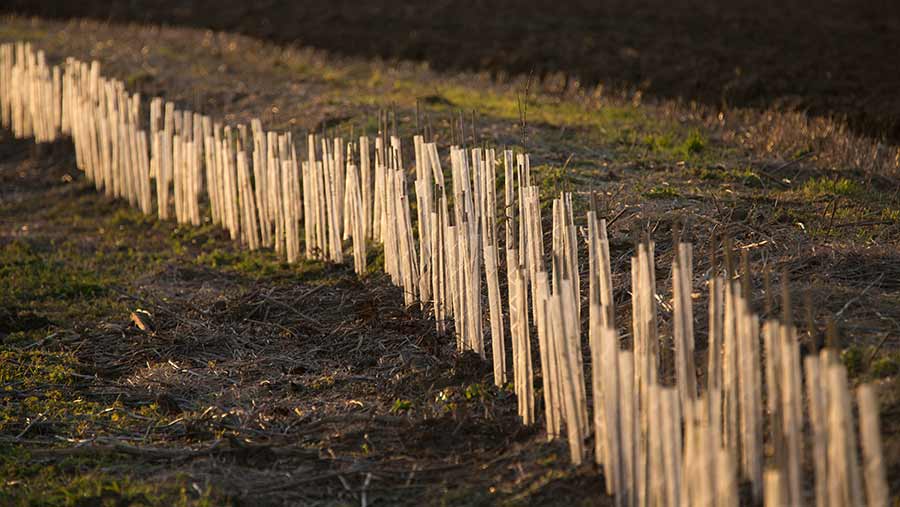Countryside Stewardship – key changes for 2023 agreements
 © Tim Scrivener
© Tim Scrivener The Countryside Stewardship Scheme (CSS) is now open for applications for agreements with a 1 January 2023 start date.
Farmers Weekly highlights the key dates farmers need to know about, the main changes for this year, and some important considerations.
See also: Farmers told to use CSS as bridge to ELMS
Application dates and process
For the first time this year, farmers can make a Mid Tier application online through the Rural Payments service, so it is no longer necessary to request a paper application pack, although they are still available.
There is no longer an application deadline for standalone capital grants – applications can be made year-round, as long as the budget is available.
Defra has said it will give six weeks’ notice if it proves to be oversubscribed.
Key dates are:
31 March Deadline for requesting a Higher Tier application pack
29 April Deadline to submit Higher Tier application
20 May Last date to request Catchment Sensitive Farming approval if applying for certain capital grants or management options in high or medium priority water or air quality catchments. Also, last date to request approval from Natural England to use either of the new lowland peat soils options
27 May Deadline to request a Mid Tier paper application pack (if required)
29 July Deadline to submit Mid Tier or Wildlife Offer application.
Higher Tier changes
David Morley, head of conservation and environment at H&H Land & Estates, says the biggest change for Higher Tier applications is the increase in payment rates announced earlier this year, which may change the equation for those coming to the end of an existing Higher Level Scheme (HLS) agreement.
In previous years, the financially better option for farmers coming to the end of an HLS agreement has been to extend it by a further 12 months, rather than entering into a new Higher Tier CSS agreement.
“With the increase in payment rates, however, the decision to extend an HLS agreement or apply for Higher Tier is less clear-cut,” he says.
“If you have recently been offered an HLS extension, it may be worth exploring Higher Tier to work out if that may now be the better option for your farm.”
Mid Tier changes
For 2023, changes have been made to several management options available in CSS agreements.
These include:
- WD9 (Livestock exclusion supplement) can now be used with UP1 (Enclosed rough grazing), UP2 (Management of rough grazing for birds) and UP3 (Management of moorland).
- Two new options specific for lowland peat related to arable (SW17) and permanent grassland (SW18) have been introduced. These will raise water levels to prevent further degradation of, and where possible restore, lowland peat soils.
- SW8 (Management of intensive grassland adjacent to a watercourse) can now be used in the uplands (above the Severely Disadvantaged Area line).
- FG1, FG2 (Fencing) specification of preservative has changed and the use of metal fence posts is now allowed.
- TE3 (Planting a tree) now allows planting of fruit trees on permanent pasture.
- SW4 (12-24m buffer strip) and SW7 (Arable conversion to grassland) can now be used with nitrogen sensitive habitats.
- SW5 (Enhanced management of maize) now allows cover crop to be sown under maize and to be used with part parcel options SW1 (4m to 6m buffer strip on cultivated land) and SW4 (12m to 24m watercourse buffer strip on cultivated land).
- Payments for organic farming options have also risen by between 46% and 500%, following the recent payment review.
Catchment Sensitive Farming approval has been extended to cover both high and medium priority areas for water and air quality management options.
Mid Tier applications can include a two-year capital grants programme for hedge or wall restoration and, if in a target area for water quality, water capital items, such as roofing middens and silage pits.
“In a significant change from previous years, Mid Tier agreement holders will be able to apply for another two-year capital grant programme once their initial programme is complete and claimed for,” says Mr Morley.
Capital grants
The standalone capital grants scheme will now have a rolling application window and applications can be submitted online.
However, the capital grant rates have not been increased. The £20,000 limit remains for each of the different grant groups – boundary restoration, water capital and air quality.
Farmers looking at any options as a standalone grant are being advised to get their application in as soon as possible to ensure they secure funding, as there is a risk that the budget will run out.
Countryside Stewardship renewals
Agreements that started in January 2018 will finish at the end of this year and the Rural Payments Agency will likely offer those agreement holders a mirror agreement, which effectively provides a new five-year agreement on the same basis as the original one, says Mr Morley.
“Options cannot be changed, and capital works cannot be added to a mirror agreement,” he points out.
“In a change from previous years, however, farmers who accept the offer of a mirror agreement will be able to apply for a separate capital grant agreement on the same land.
“Therefore, the only reason not to accept a mirror agreement offer would be if the options need to be changed in some way or the capital items you want to apply for will exceed the £20,000 limit for a capital grant application. We strongly recommend anyone in this position seeks professional advice before making a decision.”
